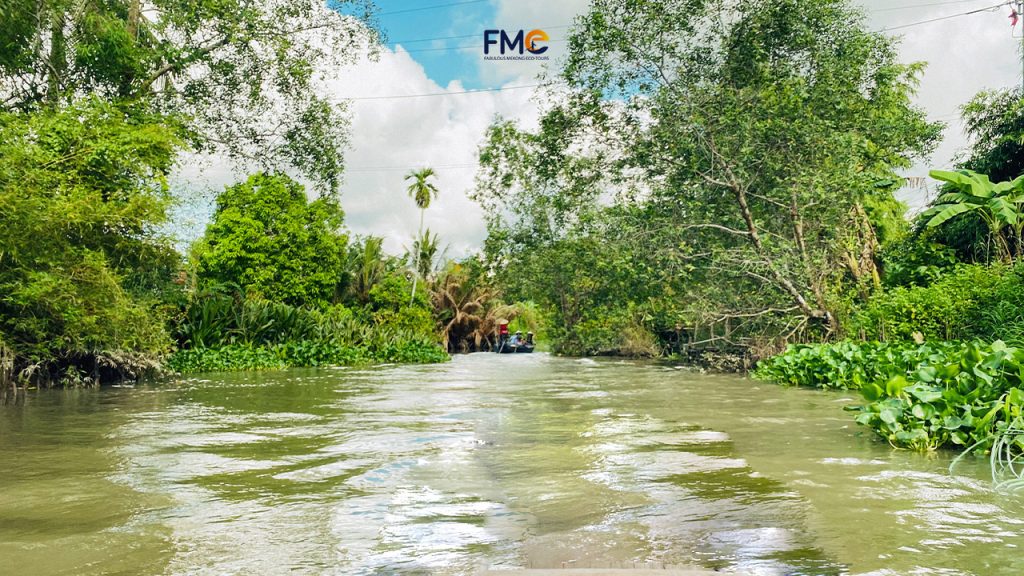The Mekong River is one of the longest and most significant rivers in Southeast Asia. It flows through six countries, including China, Myanmar, Laos, Thailand, Cambodia, and Vietnam, before emptying into the South China Sea. The Mekong River is vital to the livelihoods of millions of people, providing water for drinking, irrigation, and fishing.
However, in recent years, the construction of dams on the Mekong River has become a contentious issue, with concerns about their impact on the river’s ecology and the people who depend on it.

In this article, we will explore the question of how many dams are there on the Mekong River, examining the impact of these dams on the river and the people who depend on it.
How many dams are there on the Mekong River?
As of 2021, there are 13 dams on the mainstem of the Mekong River, with a total installed capacity of around 5,300 megawatts. The majority of these dams are in China, with three dams in Laos and one in Cambodia. Additionally, there are over 100 dams and other water infrastructure projects planned or under construction on the tributaries of the Mekong River.
- Jinghong Dam (China)
- Manwan Dam (China)
- Dachaoshan Dam (China)
- Nuozhadu Dam (China)
- Goupitan Dam (China)
- Xayaburi Dam (Laos)
- Don Sahong Dam (Laos)
- Pak Beng Dam (Laos)
- Pak Lay Dam (Laos)
- Lower Sesan 2 Dam (Cambodia)
- Stung Treng Dam (Cambodia)
- Kratie Dam (Cambodia)
- Sambor Dam (Cambodia)
China’s dams on the upper Mekong River have been particularly controversial, with concerns about their impact on downstream communities and ecosystems.
The Chinese government has insisted that the dams are necessary for energy production and flood control, but critics argue that they are causing significant damage to the river’s ecology and the livelihoods of people downstream.
How many dams are there on China?
China operates 11 of the world’s largest dams on the upstream portions of the Mekong River, which combined store more than 47 billion cubic meters of water and can generate 21,310 MW of electricity.
How many dams are there on Laos
Laos has plans to build seven dams on the mainstream of the Mekong River, of which two have been completed (Xayaboury and Don Sahong) and one is under construction (Pak Beng). The other four are Pak Lay, Sanakham, Luang Prabang and Pak Chom.
Laos has a hydro power potential of about 26,000 MW, but only about 3,240 MW had been commissioned by November 2014. Laos will soon take an important step forward on a new hydropower project called Ban Ladhan that will have a capacity of 684 MW. However, I could not find a specific annual growth rate of building more dams on the Mekong River in Laos.
How many dams are there on Cambodia
Cambodia has a hydropower potential of about 10,000 MW, of which only about 1,329 MW had been commissioned by 2015.
Cambodia has decided to halt new hydropower dams on the mainstream of the Mekong River for 10 years, starting from 2020, to review its energy policy and focus on solar power and coal. Cambodia suffered from severe drought in 2019 that affected its agriculture and water supply.
The Mekong River and its significance
The Mekong River is a vital resource for the people of Southeast Asia, providing water for drinking, irrigation, and fishing. The river is also a significant economic resource, with industries such as tourism, agriculture, and transportation relying on it. The Mekong River is home to a diverse range of flora and fauna, including many endangered species.
The impact of dams on the Mekong River
The construction of dams on the Mekong River has had a significant impact on the river’s ecology and the people who depend on it. Dams alter the natural flow of the river, leading to changes in water quality and temperature, as well as changes in the river’s sediment load. This can have a devastating effect on the river’s ecosystem, affecting fish populations and other aquatic species.
Dams can also impact the livelihoods of the people who depend on the river. Many communities along the Mekong River rely on fishing as a source of income, and the construction of dams can disrupt fish migration and spawning, leading to a decline in fish populations. Dams can also impact the water levels in the river, leading to changes in irrigation patterns and affecting agriculture.
The future of dams on the Mekong River
The construction of dams on the Mekong River is likely to continue in the future, as countries seek to meet their growing energy demands. However, there is a growing recognition of the need to balance economic development with environmental protection and social equity.
The Mekong River Commission, an intergovernmental organization established to promote cooperation on the management of the Mekong River, has called for a ten-year delay on all dam projects on the mainstem of the river to allow for further study and consultation.
There are also calls for greater transparency and participation in decision-making processes related to the construction of dams on the Mekong River.
Civil society organizations, such as the Save the Mekong Coalition, are advocating for greater public participation in decision-making, transparency in the planning and implementation of dam projects, and the recognition of the rights of local communities.
Conclusion
The construction of dams on the Mekong River has significant implications for the river’s ecology and the livelihoods of the people who depend on it. As of 2021, there are 13 dams on the mainstem of the river, with many more planned or under construction on its tributaries.
While these dams can provide energy and flood control, they can also have significant negative impacts on the river’s ecosystem and the people who depend on it. As such, there is a growing recognition of the need to balance economic development with environmental protection and social equity.
Introducing the documentary: The Mekong River With Sue Perkins.
FAQs
What is the Mekong River Commission?
The Mekong River Commission is an intergovernmental organization established to promote cooperation on the management of the Mekong River.
Why are dams being built on the Mekong River?
Dams are being built on the Mekong River to meet the growing energy demands of the region.
What is the impact of dams on the Mekong River?
Dams can have a significant impact on the river’s ecology and the livelihoods of the people who depend on it, affecting fish populations, water quality, and irrigation patterns.
How many dams are planned for the Mekong River?
There are over 100 dams and other water infrastructure projects planned or under construction on the tributaries of the Mekong River.
What is the Save the Mekong Coalition?
The Save the Mekong Coalition is a civil society organization advocating for greater public participation in decision-making, transparency in the planning and implementation of dam projects, and the recognition of the rights of local communities.
